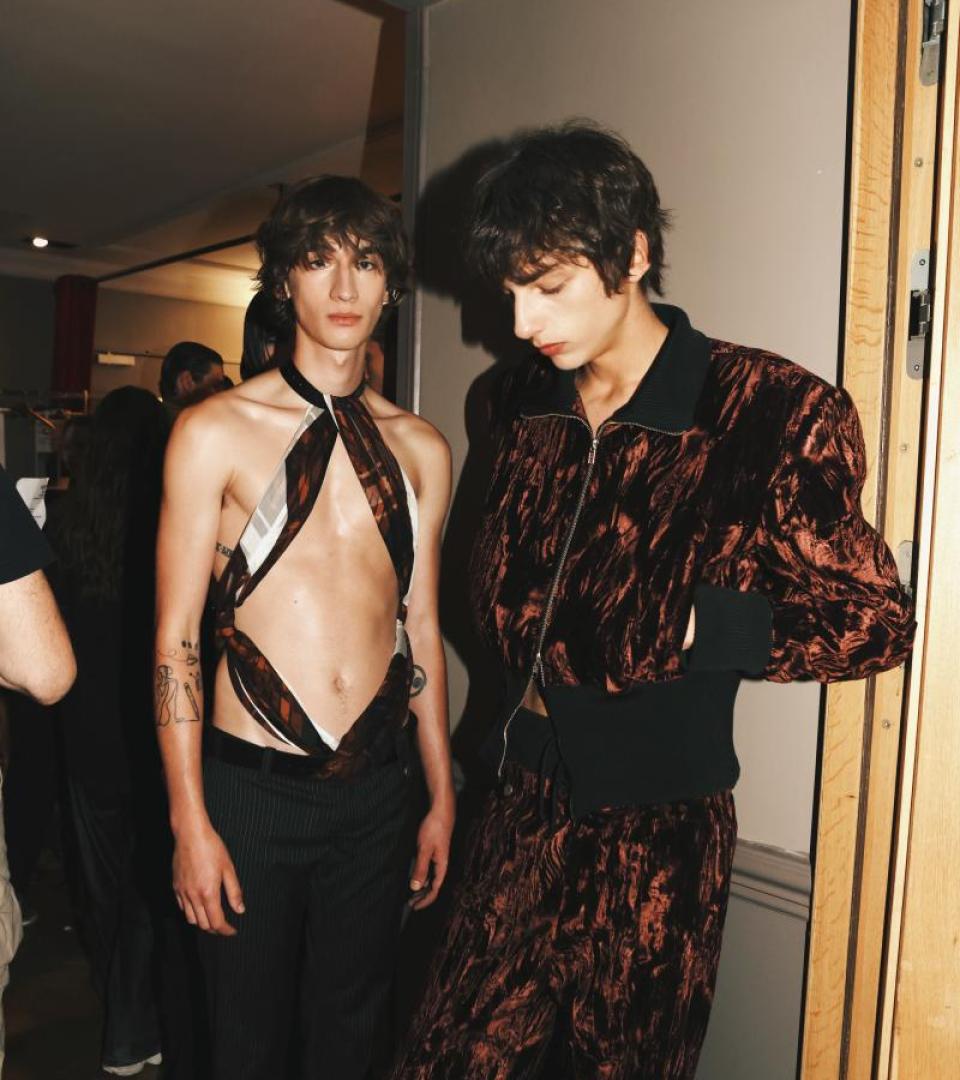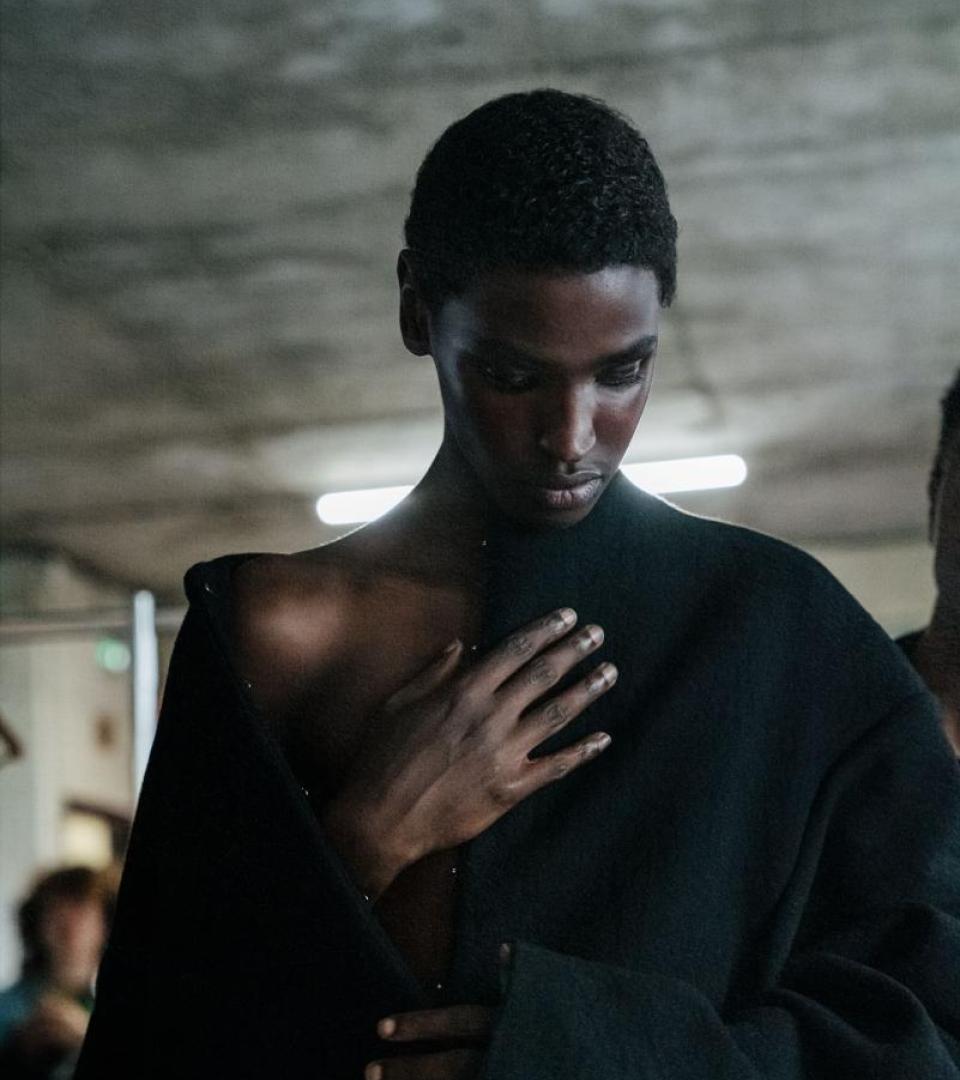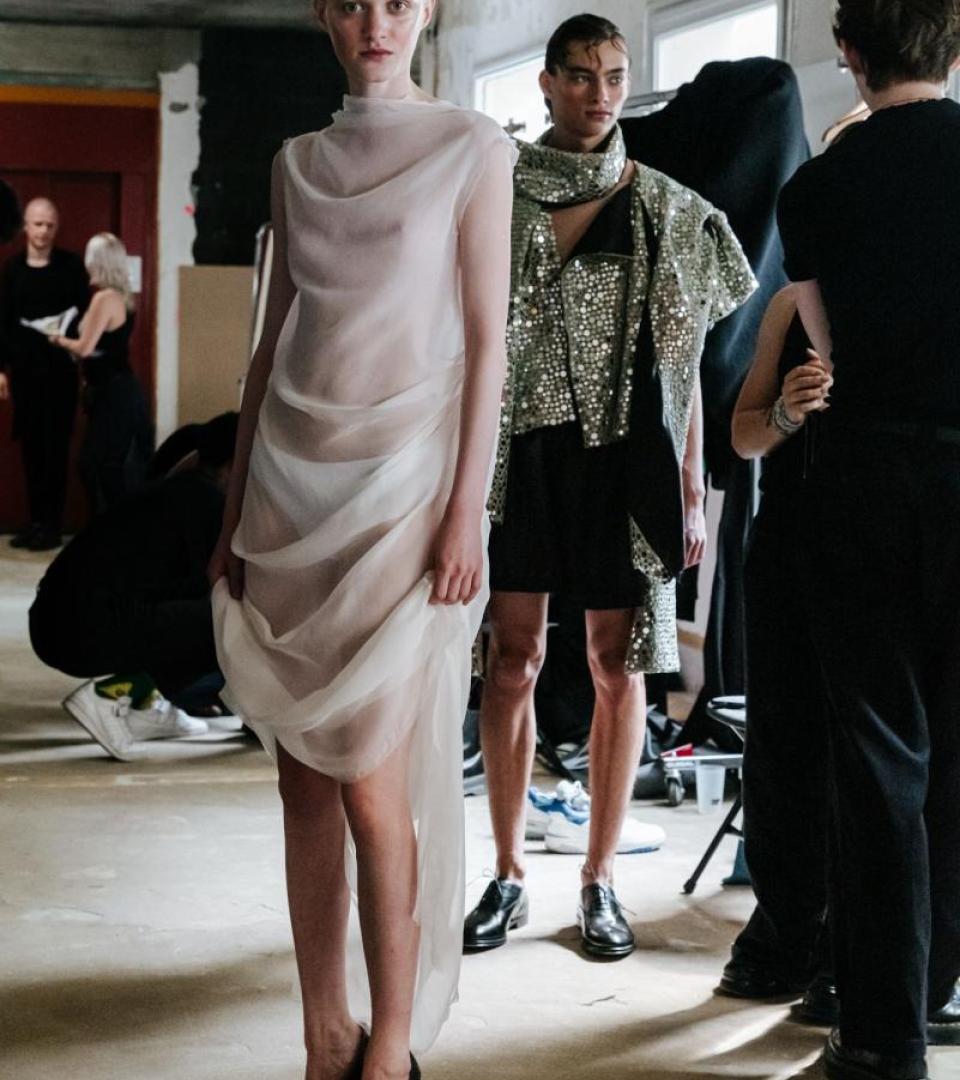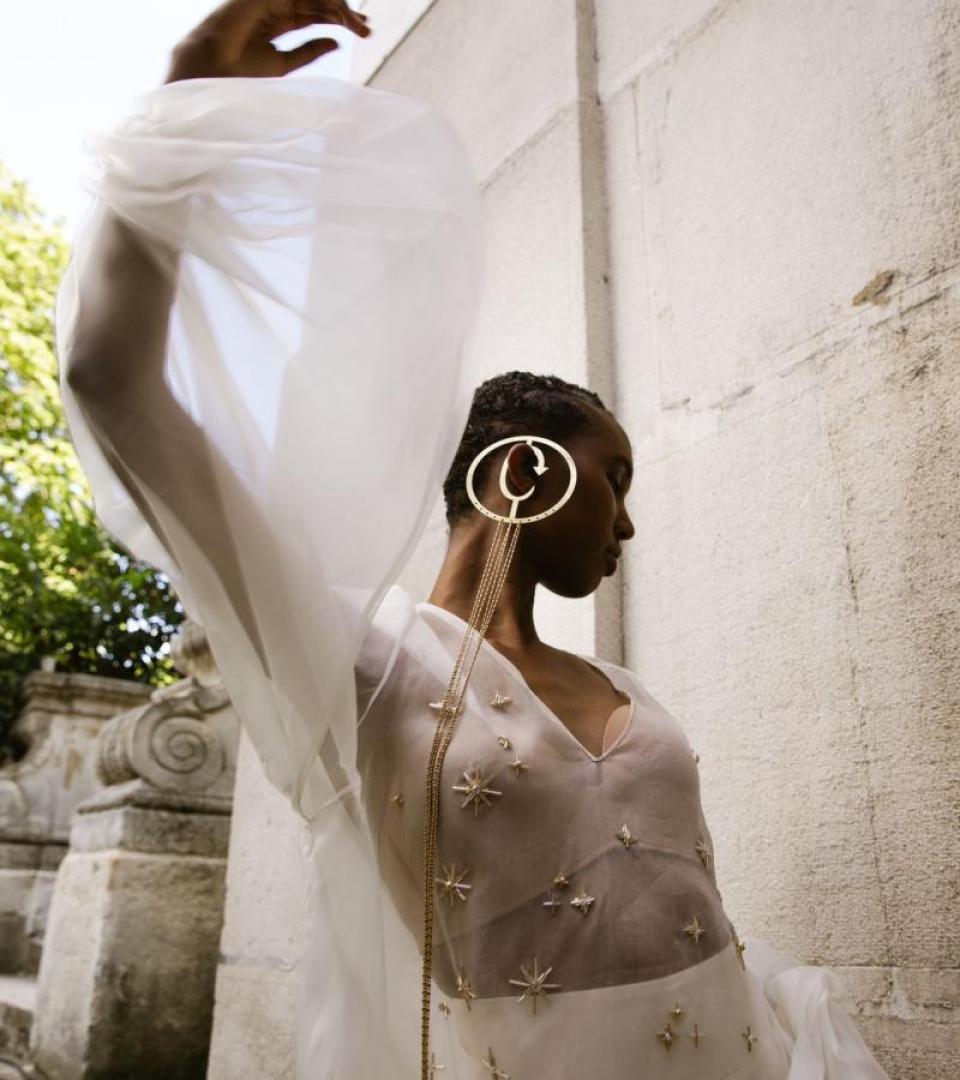Form, Function and Glamor at Niccolò Pasqualetti
By Paul McLauchlan
For Spring-Summer 2026, Niccolò Pasqualetti's preoccupation with glamor underscored their most confident outing yet. They asserted form, function and glamor as the core principles of design. Their sartorial inquiry explored “what is right, and deliberately wrong.”
Pasqualetti's inspirations are somewhat abstract and elusive. When probed, they suggest Richard Serra’s postminimalist curvilinear sculptures and Memphis Group designer Peter Shire’s metal angel sculptures from the 1990s. They elevated the banal, tilting formal expectations on their axis, by exposing shoulder pads, inserting zippers between pleats, toying with geometric shapes to disrupt conventional silhouettes. Laser-cut suede and intricate beading and metal accents provide textural intrigue. They shimmered or softened in complementary lighting design by Thierry Dreyfus, the eminent lighting director who has collaborated with Thierry Mugler, Rei Kawakubo and Helmut Lang.
“It’s about confidence,” said Pasqualetti, on a video call from Tuscany, Italy. “I like the idea that there has to be a match between you and what you wear. It’s most important when you live a busy life that your clothing is not too complicated or stylized. You can express yourself in an authentic way.”



